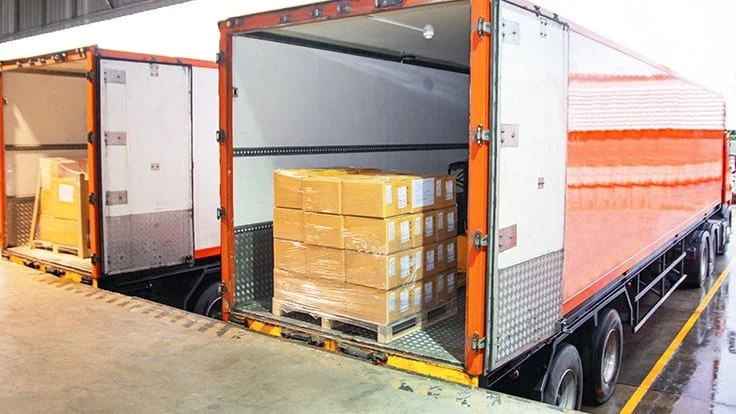
Adobe Stock
Headquartered in Miami, Florida, Costa farms produces more than 1,500 varieties of houseplants for flowering scenery, tropical landscapes, container gardens, decks, patios and more.
While Miami is Costa Farms’ founding location, it also has locations in North Carolina, South Carolina and China. Combined, these locations allow the company to ship product to garden centers, home improvement stores and grocery stores across the United States and the Dominican Republic.
Since Costa Farms has such a large offering, it has a lot of ground to cover. One way it does so is with efficient shipping — transportation to be exact.
“We’re not your average Joe. We try to figure out ways to make transportation of the product more efficient in both operational aspects — getting freight to the customer faster with better quality — but also in ways that are more economical and follow the forecast of what should be expected,” says Willy Maurer, director of transportation.
Although Maurer is new to Costa Farms — about a year and a half in — he is not foreign to the job. In 1999, Maurer graduated college after majoring in finance and logistics, and has been in the industry ever since. His 20-year tenure is exactly what is needed to ship Costa Farm’s 30,000 truckloads of freight each year.
His job consists of overseeing day-to-day operations as well as keeping up with trucking conditions and fuel to decide which direction the company needs to go. He also works alongside his team and collaborates with other departments, although they are sometimes grouped together. While each division works to get the same product on the road, they do so in unique ways.
“Transportation is pretty much just that — it’s scheduling the trucks that come in, loading the trailers and picking up racks, whereas operations handles the whole outbound logistics,” he says.
Simply put, operations fulfil the orders and then tells transportation where to go. While the transportation and operations department differ, Maurer says it’s important to communicate across both departments to streamline the shipping process.
“It is extremely important to have visibility throughout what I call the ‘outbound supply chain’ because we’re dealing with perishable items,” he says.
While the “inbound supply chain” is important to manage too, any miscommunication in the outbound chain can “create huge bottlenecks and become a complete nightmare,” Maurer says, “especially when we have the volume we do in peak season in spring.”
The most important thought to communicate, Maurer says, are any possible delays, and being proactive if there’s a foreseen issue in either department.
Another department Maurer works closely with is the actual shipping side, which handles the shipping units. According to Maurer, that department has software that maximizes packing based on the size of the plants. The software tells the employees how many plants to place on a rolling rack.
“It pretty much says, ‘the best way to pack these [is] like this,’” Maurer says. “It gives them a schematic based on the size of the plants and once they do, it’s then boxed, secured and labeled.”
Next is transporting, where the dispatcher is given the route, which Maurer says is a massive part of shipping efficiency.
“Every day you lose costs money and it’s sales not being produced,” he says, noting that this year is a “perfect example.” Maurer says that after the “April law of COVID,” the demand was at a fever pitch.
“We could not get plants to the stores fast enough,” he says. “We were getting pictures from stores saying, ‘Hey, we have empty tables,’ and we were just pumping freight out as fast as we possibly could, and it wasn’t fast enough.”
Every day that the plants were not there, it led to a couple of problems. “First, people can’t buy plants for that store,” he says. “They can go to the competitor and buy their plants there, or they might decide to do something different. It’s like a hotel room. They lose that day of business and don’t get it back. So transportation and getting product in is very, very important.”
Efficient shipping is also crucial to maintaining plant health. Plants sitting in enclosed spaces like trucks are more likely to develop pest and disease issues before they even reach their final destination.
Although Costa Farms does not have their own trucks, they have trailers that are used by the trucking companies it hires. Their transportation has two sides: the dedicated side and the foliage side. The dedicate side goes shorter distances, which runs out of the Miami location and two Carolina farms. The other side is the foliage side, or “over the road” side, which is all one-way freight. On the foliage side, carriers are booked to supply the truck, trailer and racks, while one the dedicated side, racks are owned by Costa Farms and dropped off when no longer in use at the stores.
Maurer says it’s important to have two different sides because of the product variation, which requires different shipping properties such as security and refrigeration. But that’s not the only thing that’s important for efficient shipping.”
“When you put a good plan in process, work with the other departments and be honest with one another, it makes shipping smoother,” he says.
Latest from Greenhouse Management
- Anthura acquires Bromelia assets from Corn. Bak in Netherlands
- Top 10 stories for National Poinsettia Day
- Langendoen Mechanical hosts open house to showcase new greenhouse build
- Conor Foy joins EHR's national sales team
- Pantone announces its 2026 Color of the Year
- Syngenta granted federal registration for Trefinti nematicide/fungicide in ornamental market
- A legacy of influence
- HILA 2025 video highlights: John Gaydos of Proven Winners





